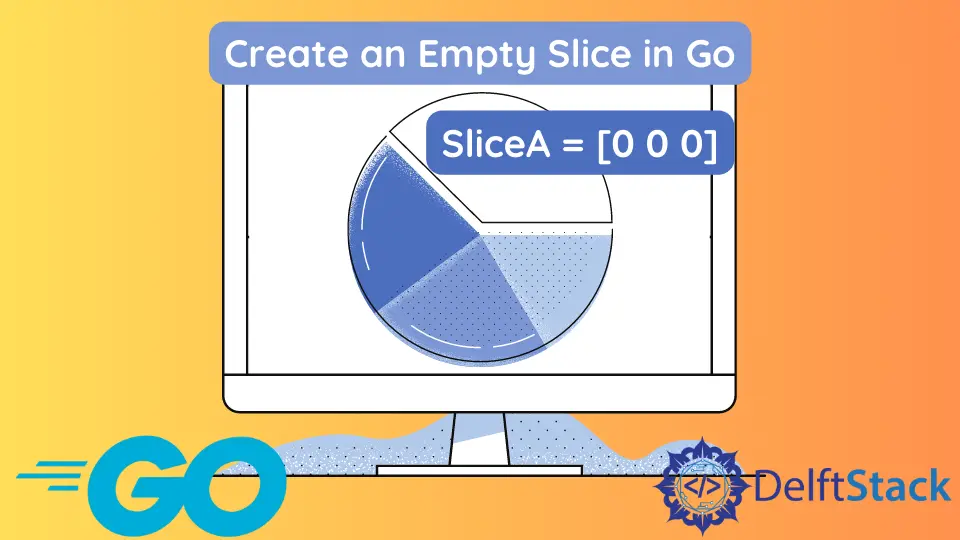Créer une tranche vide dans Go

Cet article traite de la mise en œuvre des tranches vides dans Go.
Initialiser une tranche vide dans Go
Une tranche vide a une référence à un tableau vide. Il a une longueur et une capacité nulles et pointe vers un tableau sous-jacent de longueur nulle.
Nous pouvons initialiser une tranche vide dans Go en utilisant le code ci-dessous.
package main
import "fmt"
func main() {
b := []string{}
fmt.Println(b == nil)
}
Production:
false
Utilisez make() pour créer une tranche vide dans Go
La fonction make() peut également générer une tranche vide.
Ci-dessous quelques exemples de code utilisant make().
Exemple 1:
package main
import "fmt"
func main() {
c := make([]string, 0)
fmt.Println(c == nil)
}
Production:
false
Exemple 2 :
package main
import "fmt"
func main() {
// Creating an array of size 6
// and slice this array till 3
// and return the reference of the slice
// Using make() function
var sliceA = make([]int, 3, 6)
fmt.Printf("SliceA = %v, \nlength = %d, \ncapacity = %d\n",
sliceA, len(sliceA), cap(sliceA))
// Creating another array of size 6
// and return the reference of the slice
// Using make() function
var sliceB = make([]int, 6)
fmt.Printf("SliceB = %v, \nlength = %d, \ncapacity = %d\n",
sliceB, len(sliceB), cap(sliceB))
}
Production:
SliceA = [0 0 0],
length = 3,
capacity = 6
SliceB = [0 0 0 0 0 0],
length = 6,
capacity = 6
Vous aimez nos tutoriels ? Abonnez-vous à DelftStack sur YouTube pour nous aider à créer davantage de tutoriels vidéo de haute qualité. Abonnez-vous